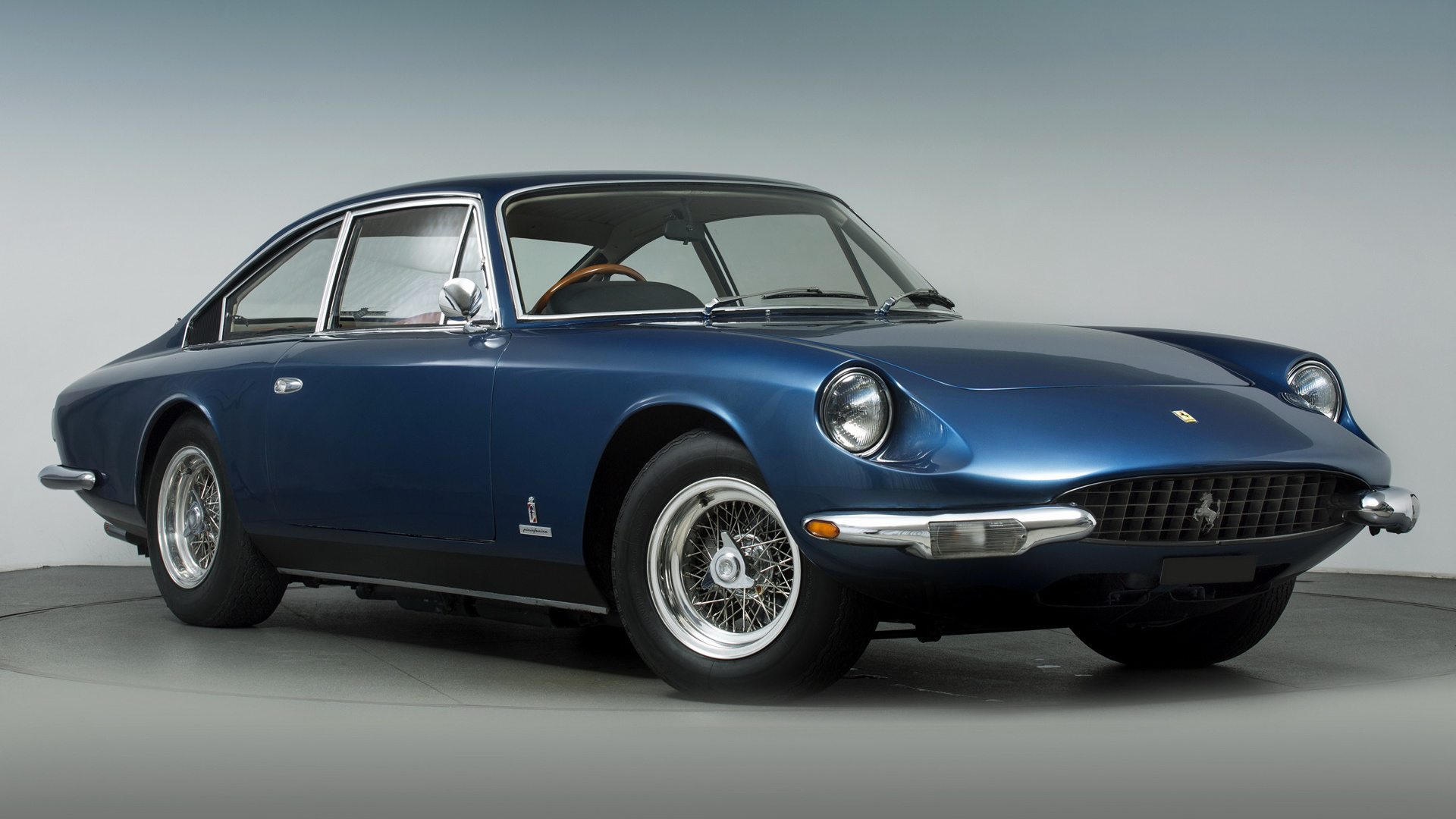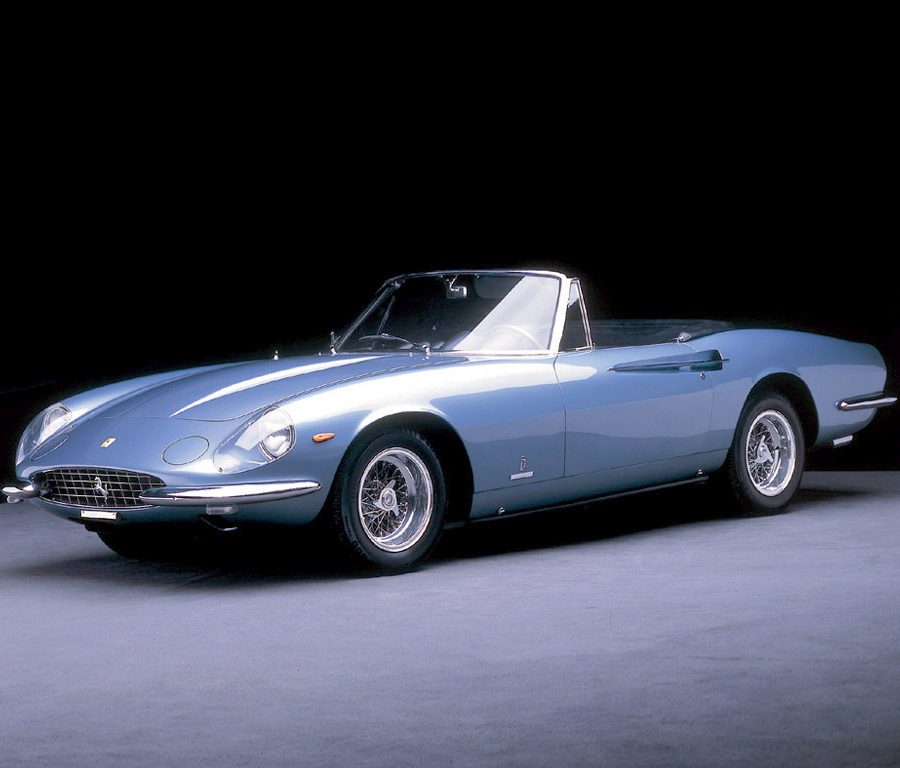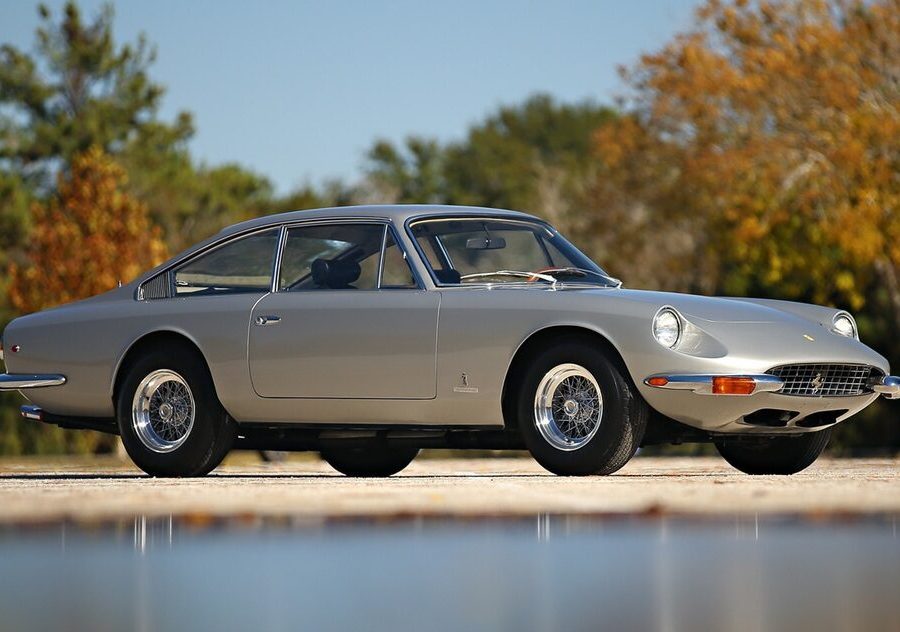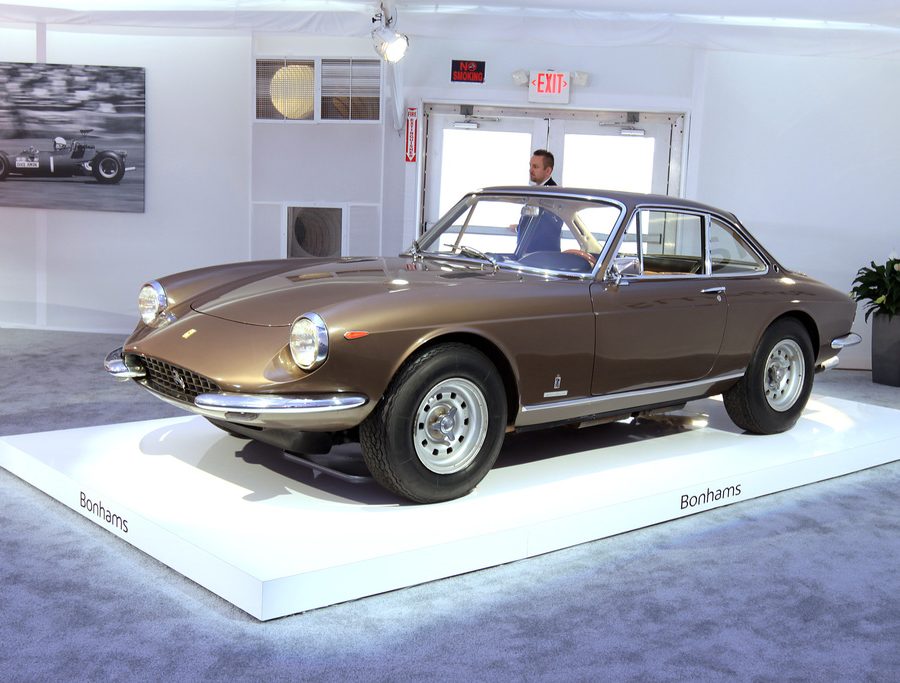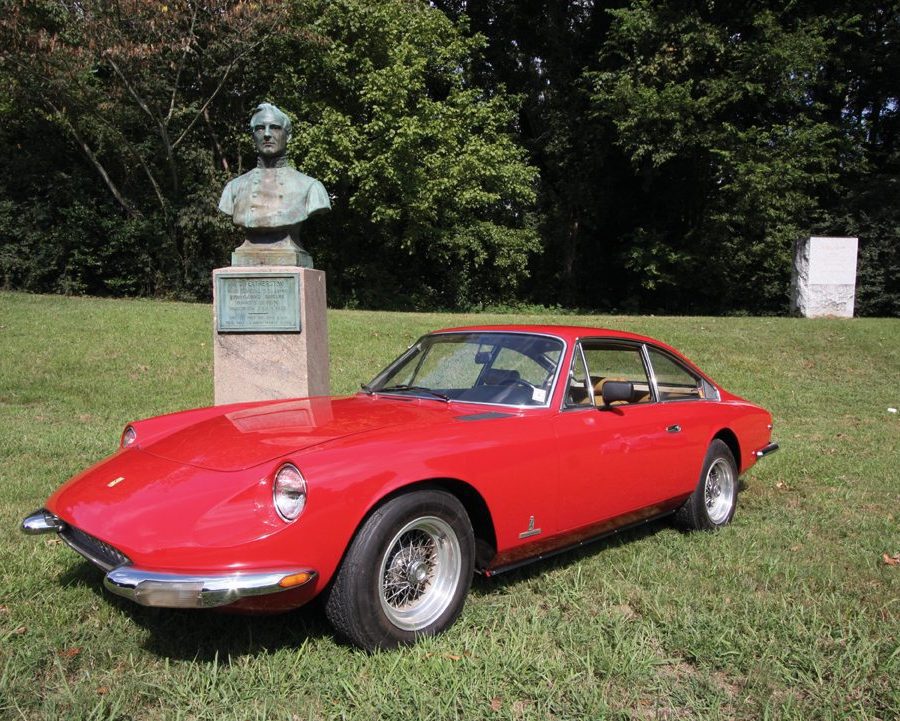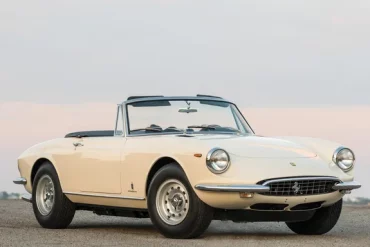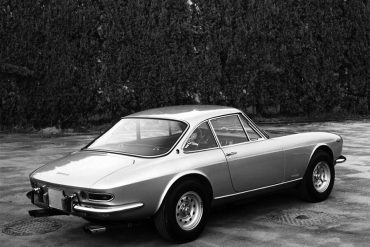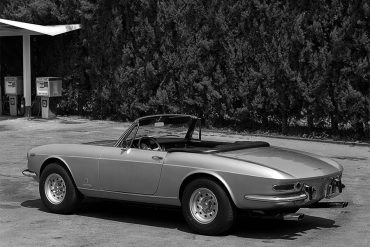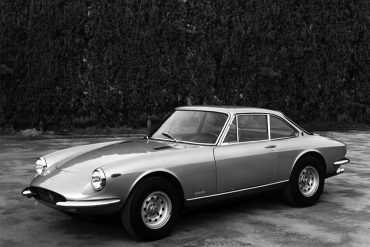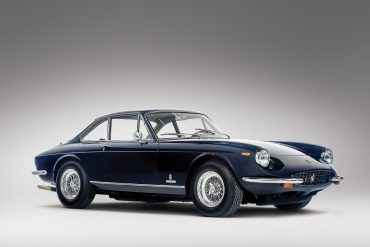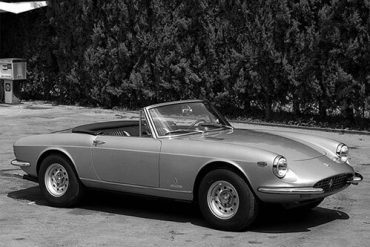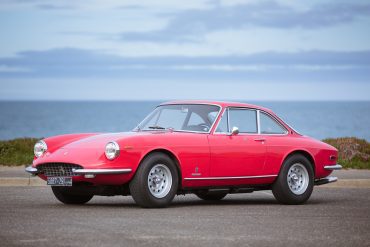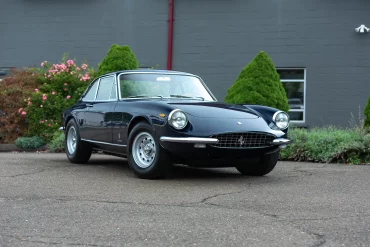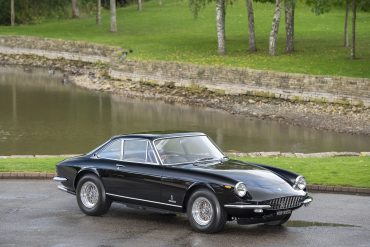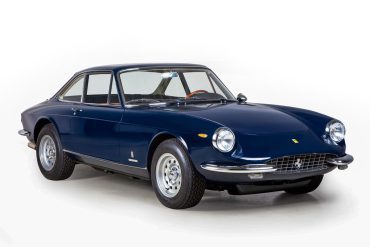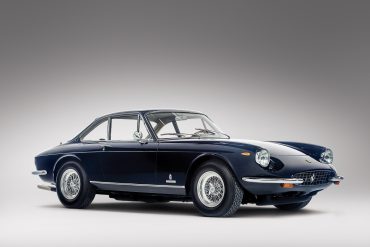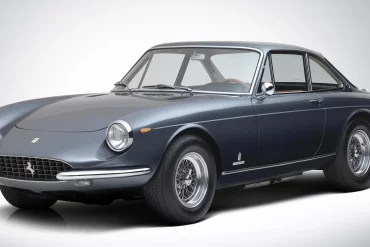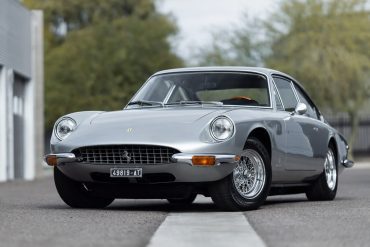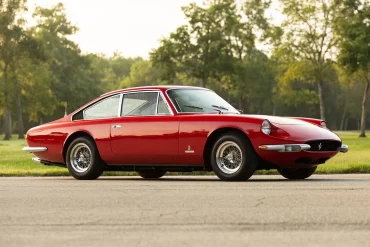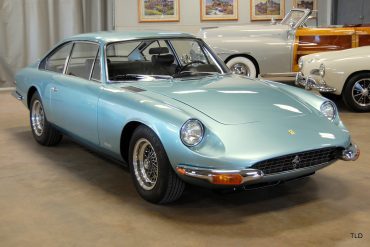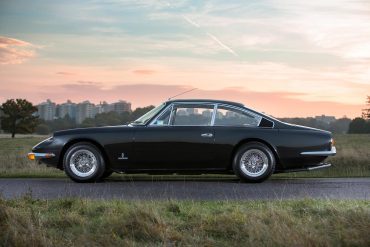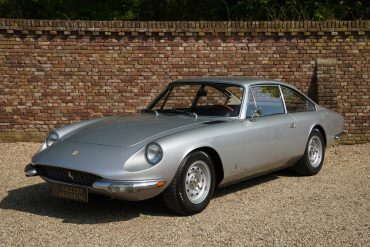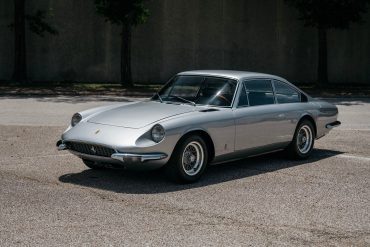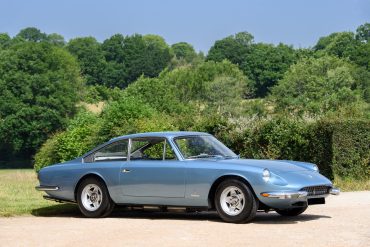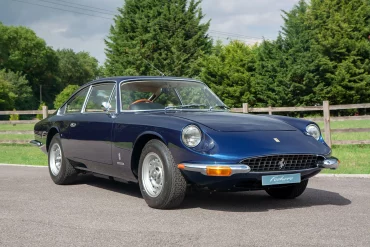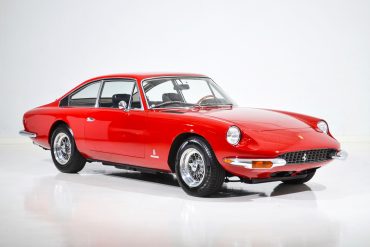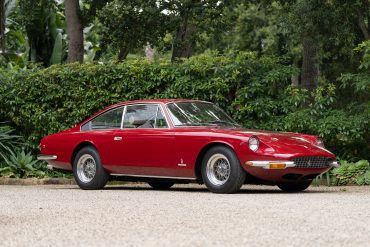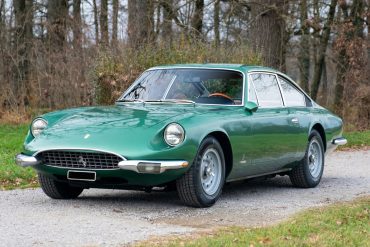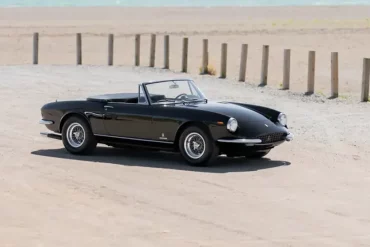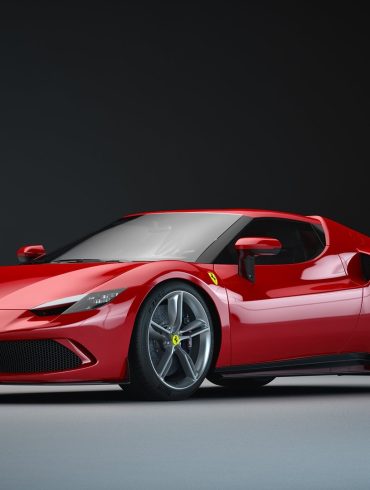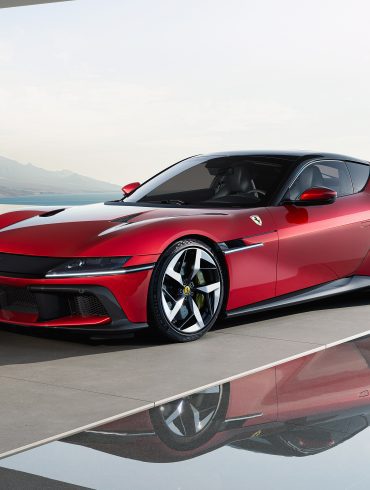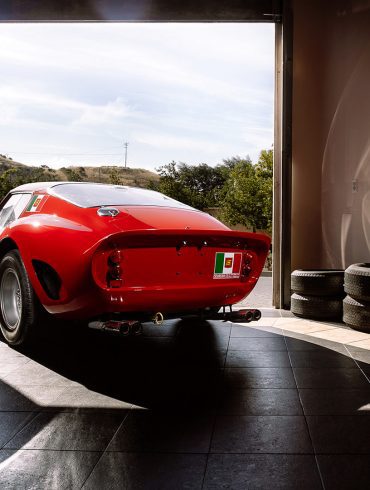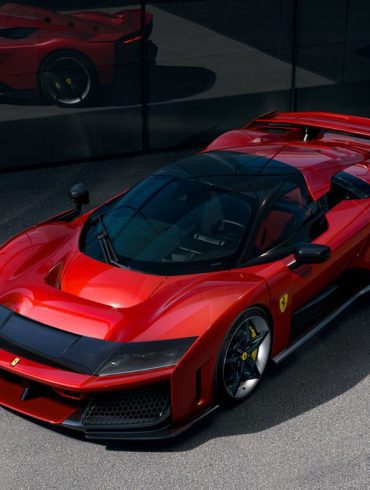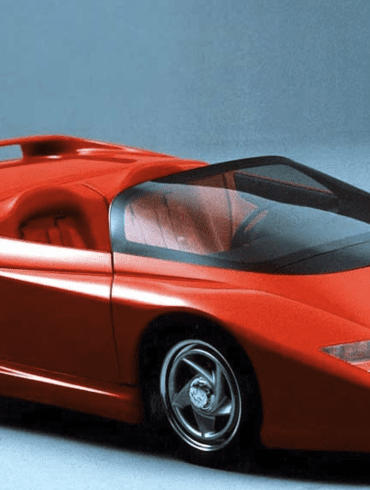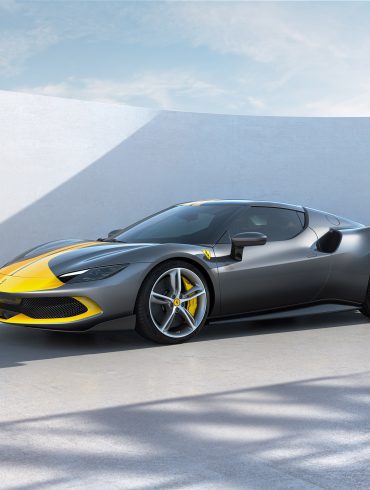Ferrari 365 Spyder California Shortly after the last 500 Superfast was made, the 365 California was announced as the model’s successor. It was the continuation of a series of limited production cars which included the 410 and 400 Superamercas. These cars were marketed to attract premium customers who demanded a...
Ferrari 365
The Ultimate Guide
The Ferrari 365 was a family of grand tourers that marked a transition for Ferrari, embracing larger engines and more luxurious appointments. Replacing the outgoing 330 and 500 Superfast models, the 365 utilized a new 4.4-liter V12 engine, an evolution of the Colombo design. This engine was wrapped in a variety of elegant body styles, including the limited-production 365 California Spyder, the sleek 365 GTC and GTS coupes and spiders, and the powerful 365 GTB/4 "Daytona" (not covered on this page). These cars were designed for high-speed touring, offering performance, comfort, and exclusivity, perfect for affluent buyers that Ferrari was trying to court.
The Ferrari 365 Series (1966–1971): Elegance and Performance Redefined
The Ferrari 365 series, produced from 1966 to 1971, represents a defining era for Ferrari, combining luxury, performance, and timeless design.
Comprised of the 365 California, 365 GT 2+2, 365 GTC, and 365 GTS, this series showcased Ferrari’s ability to cater to a wide range of enthusiasts, from those seeking opulent grand tourers to drivers demanding sharp, performance-oriented sports cars.
This article explores the history, model variants, performance, reception, and enduring legacy of the Ferrari 365 series.
The Next Step in Ferrari’s Evolution
Introduced as successors to the 330 series, the Ferrari 365 models were powered by a larger 4.4-liter Colombo V12 engine, delivering more power and refinement. This series marked Ferrari’s continued evolution toward creating cars that balanced high-speed capability with comfort and usability.
The models in the 365 lineup catered to diverse audiences:
The 365 California, a luxurious limited-production convertible, targeted Ferrari’s wealthiest clientele.
The 365 GT 2+2 served as a flagship grand tourer, offering practicality and comfort for long-distance driving.
The 365 GTC and 365 GTS were more compact, performance-focused variants designed for enthusiasts who valued handling and agility.
A Closer Look
Ferrari 365 California (1966–1967)
The 365 California was the pinnacle of exclusivity, with only 14 units built. Positioned as the spiritual successor to the 500 Superfast, it featured a Pininfarina-designed convertible body with distinctive styling elements such as covered headlamps and a long, sweeping tail.
Engine: 4.4-liter V12 producing 320 horsepower.
Performance: Top speed of 152 mph and 0-60 mph in approximately 7 seconds.
Legacy: A symbol of bespoke luxury, the 365 California remains one of Ferrari’s rarest and most collectible models.
Ferrari 365 GT 2+2 (1967–1971)
The 365 GT 2+2, also known as the “Queen Mother of Ferraris,” was Ferrari’s most luxurious grand tourer of the era. It featured independent rear suspension (a first for a Ferrari 2+2), power steering, and air conditioning as standard.
Engine: 4.4-liter V12 producing 320 horsepower.
Performance: Top speed of 150 mph and 0-60 mph in 7.5 seconds.
Legacy: Known for its comfort and practicality, the 365 GT 2+2 appealed to buyers seeking a Ferrari for everyday use.
Ferrari 365 GTC (1968–1970)
The 365 GTC was a coupe version of the series, positioned as a successor to the 330 GTC. It combined the luxurious interior of the 2+2 with a shorter wheelbase, making it more agile and dynamic.
Engine: 4.4-liter V12 producing 320 horsepower.
Performance: Top speed of 150 mph and 0-60 mph in 6.9 seconds.
Legacy: Praised for its handling and balance, the 365 GTC is considered one of the best-driving Ferraris of its time.
Ferrari 365 GTS (1969)
The 365 GTS was the convertible counterpart to the GTC, offering open-top motoring with the same performance and handling characteristics. Only 20 units were produced, adding to its exclusivity.
Engine: 4.4-liter V12 producing 320 horsepower.
Performance: Top speed of 150 mph and 0-60 mph in 7 seconds.
Legacy: With its rarity and elegant design, the 365 GTS is highly coveted by collectors.
Power Meets Refinement
The Ferrari 365 series was powered by the Colombo-designed 4.4-liter V12, known for its smooth power delivery and distinctive exhaust note. Paired with a five-speed manual gearbox, the engine offered a perfect balance of performance and usability.
Driving Dynamics: The independent rear suspension, combined with precise steering, provided excellent handling for the time, especially in the GTC and GTS variants.
Comfort: The 365 GT 2+2 prioritized ride quality and comfort, making it an ideal grand tourer.
Acceleration and Top Speed: Across the range, 0-60 mph times ranged from 6.9 to 7.5 seconds, with top speeds around 150 mph.
Road & Track praised the 365 GTC for its "effortless power and impeccable road manners," while Car and Driver noted that the 365 GT 2+2 was "a grand tourer in the truest sense, capable of devouring miles with grace."
How They Were Perceived
At the time, the Ferrari 365 series was lauded for its versatility and refinement. The 365 GT 2+2 was particularly praised for its comfort and practicality, though purists occasionally criticized it for being less sporty than other Ferrari models. Meanwhile, the 365 GTC and GTS earned accolades for their balance of performance and luxury, appealing to drivers who valued agility and engagement.
The 365 California, with its limited production and bespoke nature, was a status symbol, epitomizing Ferrari’s ability to cater to the world’s wealthiest car enthusiasts.
Timeless Elegance
The Ferrari 365 series has aged gracefully, with each model carving out a unique niche in Ferrari’s history:
365 California: Its rarity and exclusivity make it a highlight of any Ferrari collection, representing the brand’s bespoke craftsmanship.
365 GT 2+2: While often overshadowed by Ferrari’s sports cars, it is increasingly appreciated for its luxurious character and as a precursor to modern Ferrari grand tourers like the GTC4Lusso.
365 GTC and GTS: These models are celebrated for their driving dynamics and timeless design, often commanding strong interest among collectors.
Today, the Ferrari 365 series is viewed as a bridge between Ferrari’s early grand tourers and its modern lineup, blending the elegance of the 1960s with engineering advancements that set the stage for future innovations.
Conclusion
The Ferrari 365 series exemplifies Ferrari’s ability to cater to diverse tastes without compromising on luxury, performance, or design. Whether it’s the opulence of the 365 California, the practicality of the 365 GT 2+2, or the dynamic appeal of the GTC and GTS, each model reflects Ferrari’s dedication to excellence. As collectible classics, the 365 series cars continue to captivate enthusiasts, offering a timeless connection to Ferrari’s golden era.
Ferrari 365
Manufacturer: Ferrari
Production: 1966–1971
Produced: 1,002 units
Class: Grand tourer
Layout: Front-engine, RWD
Engine: 4.4 L Colombo V12
Did You Know
The rare and beautiful 365 California Spyder was designed with the American market in mind, evoking the glamorous lifestyle of the West Coast. Only 14 were ever built!
The 365 series represented a transition for Ferrari, bridging the gap between the classic, curvaceous designs of the 1960s and the more angular, aggressive styles of the 1970s.
While most people associate the 365 with the Daytona, the 365 GT 2+2 was actually the most numerous model in the series. It offered comfortable seating for four and was a popular choice for grand touring.
This is a Ferrari for grown-ups. It's fast, comfortable, and spacious enough for a family
Road & Track (1968)
Ferrari 365 Model Variants
While the Ferrari 365 GTB/4 "Daytona" often steals the spotlight, the 365 family included other intriguing models that deserve recognition. This page is about those cars. The 365 GT 2+2, for instance, was Ferrari's first true four-seater offering ample space and comfort for long journeys. It was a more practical grand tourer, ideal for those who wanted Ferrari performance with everyday usability. Then there were the 365 GTC and GTS, a sleek coupe and its open-top spider counterpart. These models offered a more understated elegance compared to the Daytona, with their flowing lines and retractable headlights. Finally, there was the ultra-rare and glamorous 365 California Spyder, a limited-production convertible that embodied the spirit of open-air driving and epitomized 1960s California cool. Each of these 365 variants, while less renowned than the Daytona, contributed to the series' diverse character.
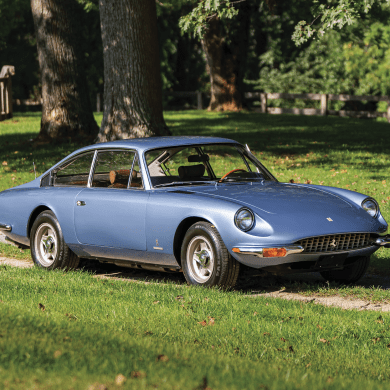
Ferrari 365 GT 2+2
Type: Production Car
Years: 1967 - 1971
Production: 800 units
Engine: 4.4 L Colombo V12
Power: 320 bhp @ 6600 rpm
Torque: 308 lb/ft @ 5000 rpm
0-60 mph: 7.1 seconds
Top Speed: 152 mph
Unveiled at the Paris Motor Show in 1967 this was the first Ferrari 2+2 with independent rear suspension. Koni's coil springs/ shock-absorbers ensured excellent road-holding, and good comfort with self-leveling system in the rear, pioneered jointly by Ferrari and Koni. As with the GTB4 and 330 GTC, transmission involved the 'torque tube' system. The chassis had the same wheel-base as the 330 GT 2+2, but the bodywork was totally new, and more like the Superfasts. Learn more.
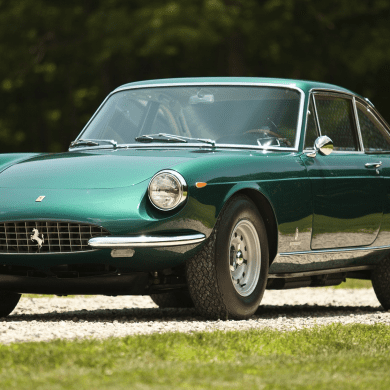
Ferrari 365 GTC
Type: Production Car
Years: 1968 - 1970
Production: 168 units
Engine: 4.4 L Colombo V12
Power: 320 bhp @ 7000 rpm
Torque: 240 lb/ft @ 2500 rpm
0-60 mph: 6.9 seconds
Top Speed: 152 mph
In 1968 Ferrari updated 330 GTC with a 4.4-litre engine and renamed the model to 365 GTC. The larger engine increased low end torque and offered 20 additional horsepower. Only 168 of the interim 365 GTC were produced until the release of the 365 GTB/4 Daytona. They are all easily identified from the 330 GTC by their engine vents at the trailing end of the hood. The fully-independent suspension features unequal A-arms, coil springs, and shocks. Learn more.
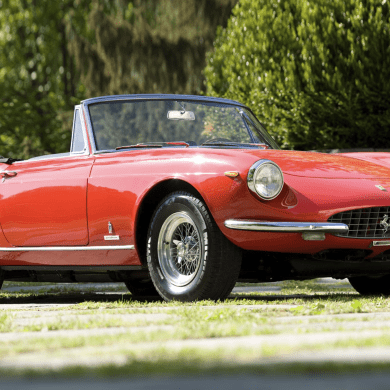
Ferrari 365 GTS
Type: Production Car
Years: 1968 - 1970
Production: 20 units
Engine: 4.4 L Colombo V12
Power: 320 bhp @ 7000 rpm
Torque: 240 lb/ft @ 2500 rpm
0-60 mph: 6.9 seconds
Top Speed: 152 mph
The strong 330 GTC got better. The 4-liter, 300-hp 330 GTC/GTS had plenty of power, but Ferrari wasn’t satisfied with plenty. Ferrari had recently introduced the 365 GT 2+2 as a successor to the 330 2+2. The 365 2+2 was larger than its predecessor, so it was given a new 4.4-liter, 320-hp engine to compensate for the weight. The 365 engine was the same size as the 330 engine, so slipping it in the 330 GTS was easy.
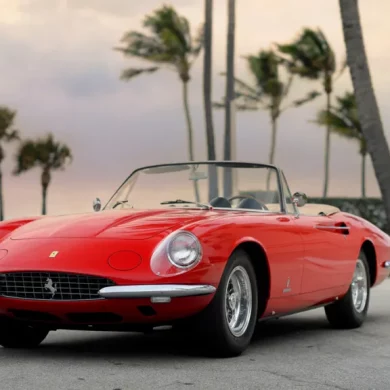
Ferrari 365 California
Type: Production Car
Years: 1966 - 1967
Production: 14 units
Engine: 4.4 L Colombo V12
Power: 320 bhp @ 6600 rpm
Torque: 253 lb/ft @ 5000 rpm
0-60 mph: 7.1 seconds
Top Speed: 152 mph
Shortly after the last 500 Superfast was made, the 365 California was announced as the model's successor. It was the continuation of a series of limited production cars which included the 410 and 400 Superamercas. To keep costs down, but exclusivity high, the 365 California was only offered to select VIP clients of Ferrari. It was basically a reworked 330 GT chassis with Pininfarina body. Learn more.
The GTC is a beautifully balanced car. It's not as raw as the Daytona, but it's still a joy to drive
Classic & Sports Car


